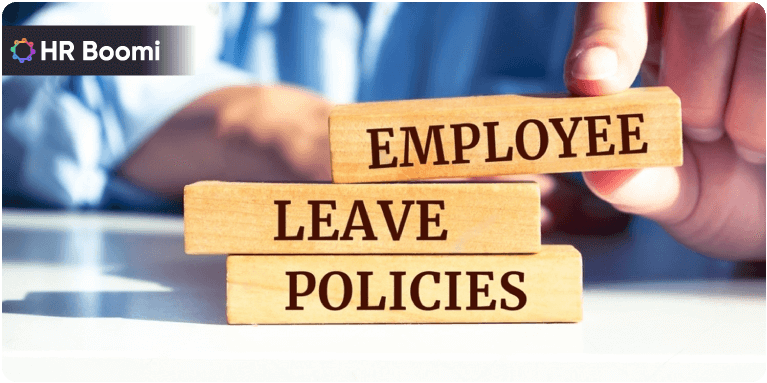
Table of Contents
In the ever-evolving landscape of modern workplaces, crafting a leave policy that perfectly balances employee well-being and organizational productivity has become a critical challenge for businesses. Employee leave policies influence workforce satisfaction and play a pivotal role in talent retention and recruitment. To navigate this intricate terrain effectively, organizations can benefit from uncovering the six essential secrets to formulating an ideal leave policy.
This informative guide will explore 44 of the intricacies of leave policy creation. We will explore data-driven insights and best practices to help you design a leave policy that fosters a harmonious work environment. So, let’s embark on discovering these secrets, armed with the knowledge and statistics underpinning them, to ensure your leave policy becomes a cornerstone of your company’s success.
According to a survey by the Society for Human Resource Management (SHRM), 88% of employees consider paid time off (PTO) as crucial to their job satisfaction. Additionally, research from the U.S. Bureau of Labor Statistics reveals that the average number of paid vacation days offered by private employers in the United States is 10 days after one year of service, emphasizing the importance of a well-crafted leave policy in today’s competitive job market.
Understand the Legal Landscape
Earlier, you embarked on crafting your organization’s leave policy. It’s imperative to have a solid perception of the prison requirements and guidelines governing employee depart. Hard work legal guidelines and employment rules vary from you. To the United States of America, or even from nation to nation, it is quintessential to completely comply with the applicable law.
For example, within the United States of America, the Family and Clinical Go Away Act (FMLA) and the Americans with Disabilities Act (ADA) offer tips for worker leave associated with health and circle of relatives’ troubles. Inside the European Union, the operating Time Directive units limit working hours and mandate minimum annual depart for employees.
Your first secret to crafting the correct go-away coverage is to research and align your coverage with the applicable felony requirements to ensure your business enterprise operates within the bounds of the law. Failure to do so can result in criminal complications and capacity liabilities.
Customize to Your Company’s Needs
Each business enterprise is specific, and so are its go-away policy requirements. While crafting your departure coverage, consider your organization’s length, enterprise, way of life, and the unique wishes of your body of workers. A one-size-fits-all technique may only be appropriate for some enterprises.
For example, a tech startup with a predominantly young staff may additionally prioritize flexible time-off selections, even as a production organization with a predominantly older team might require extra conventional department rules.
Make an effort to survey your personnel and gather their information about the sort of go-away policy that best suits their needs. This helps you tailor your coverage to shape the specific demands of your group of workers. Customization is the second mystery to creating a department coverage that resonates with your personnel.
Determine Types of Leave
Go-away policies embody a huge range of classes: annual go away, unwell leave, parental away, bereavement depart, and more. Your 0.33 secret to crafting the correct departure policy is determining which kinds of leave your organization will provide and how they may be structured.
Consider the following
Annual Leave
Determine how much paid time off employees will accrue, how it is calculated, and whether they are eligible.
Sick Leave
Establish the number of sick days allowed and whether unused ill days may be carried over to the subsequent year.
Parental Leave
Decide the length and eligibility standards for parental leave, encompassing maternity, paternity, and adoption depart.
Bereavement Leave
Please specify the days for bereavement depart and for whom it applies (e.g., immediate family members).
Special Leave
Consist of provisions for other types of leave, which includes jury duty, navy go away, or personal days.
Clear pointers on those categories are essential for preserving transparency and ensuring employees apprehend their entitlements and boundaries.
Define Eligibility and Accrual
The fourth secret to crafting an appropriate go-away policy is establishing eligibility criteria and accrual guidelines. Who’s entitled to the diverse leave varieties, and how do they accrue or earn it?
Reflect on consideration of elements inclusive of the length of provider, full-time or element-time status, and probationary intervals while determining eligibility. For instance, you could stipulate that new hires are not eligible for paid annual leave till they complete their first six months of employment.
Accrual guidelines can vary properly. Some companies provide a hard and fast number of days yearly, while others use a gadget based on a worker’s tenure. Make certain to outline that info genuinely in your coverage.
Communication and Documentation
The 5th mystery to a hit depart policy is powerful conversation and documentation. Ensure that your go-away policy is easily handy to all employees through your enterprise’s worker manual or an online portal. Personnel must understand where to discover the statistics they need once they have questions about their leave entitlements.
Additionally, your policy should define the processes for requesting an away, such as increasing word requirements, finishing paperwork, and any particular documentation (e.g., doctor’s notes for unwell go away). Sincerely defined techniques assist in streamlining depart control and save you from misunderstandings.
Flexibility and Consideration
The final mystery to crafting the correct leave coverage is flexibility and attention to the wishes of your employees. While you ought to preserve regular and honest guidelines, there must be room for flexibility and exceptions. Lifestyles are unpredictable, and personnel may also face specific circumstances requiring special issues.
Consider permitting personnel to speak about their man or woman conditions with their supervisors or HR department to locate the fine answers for both the employee and the agency. This would contain preferences like far-off paintings, unpaid away, or temporary adjustments to their painting schedules.
Conclusion
In conclusion, a properly crafted leave policy is a critical element of nice painting surroundings that support your employees and business’s operational requirements. By using the perception of the criminal landscape, customizing your policy, defining the kinds of depart, setting eligibility and accrual policies, emphasizing conversation, and incorporating flexibility, you may create a department coverage that fosters employee pride, will increase productivity, and enables your organization to thrive.
Consider that your go-away coverage should be a residing report that evolves with your enterprise’s changing needs and criminal necessities. By following these six secrets and techniques, you could ensure that your leave coverage stays a precious asset to your company and its personnel.
Recent Posts
-

In-house vs. Outsourced Payroll: Pros and Cons
-

Mastering Talent Retention: A Corporate Challenge
-

What is employer branding and how to apply it in your company?
-

The Significance of Employee Communication Within
-

What is time management and why is it important?
-

Net salary: what is it and how is it calculated?
-

Enhancing Employee Experience: Strategies for Excellence
-

10 Best Gifts to Boost Sales Channels
